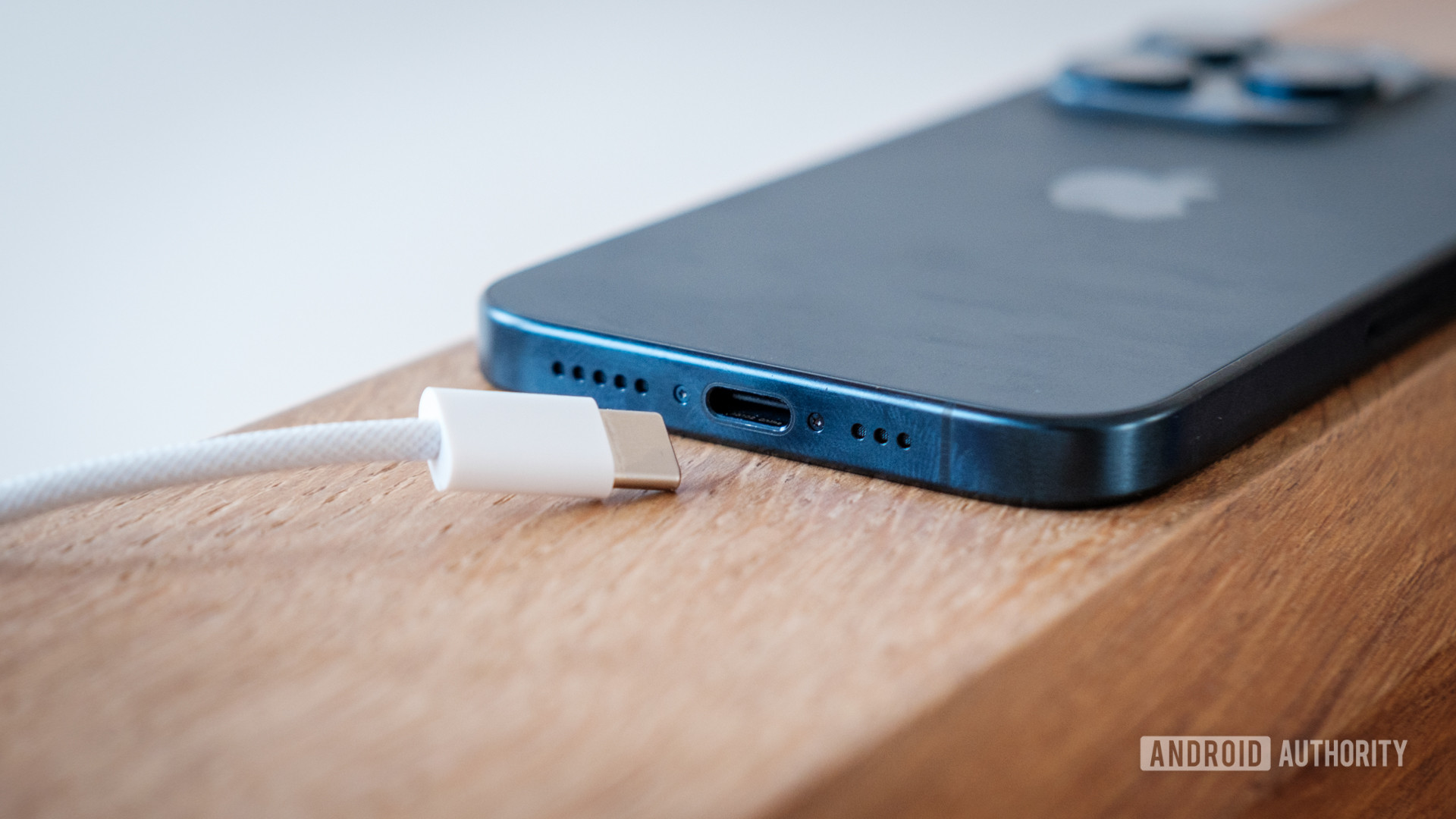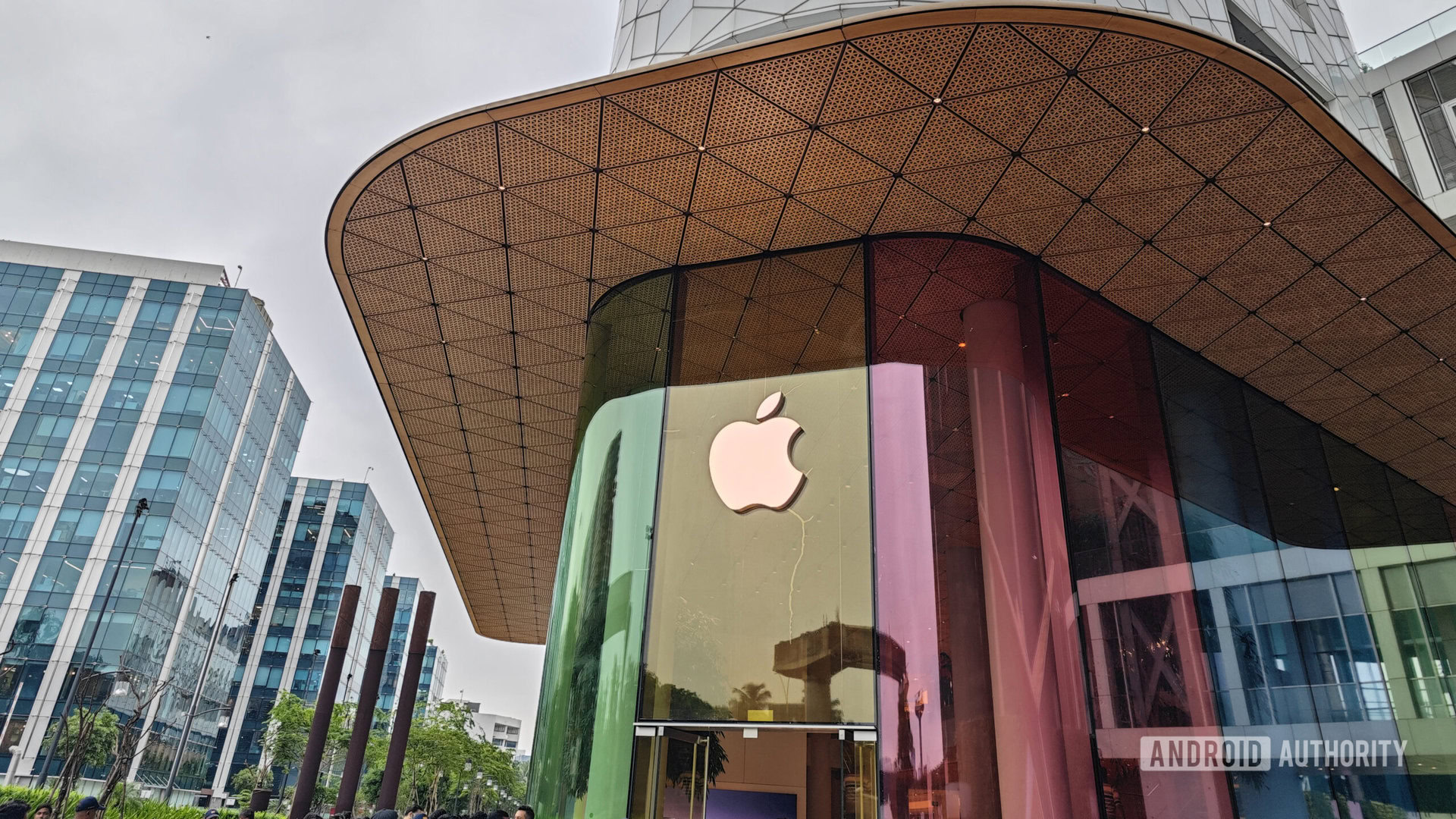Affiliate links on Android Authority may earn us a commission. Learn more.
iPhone charging port not working? Here's how you can try to fix it
Published onFebruary 14, 2024
No matter how much you might like MagSafe, or whether you have an model with USB-C or Lightning, one thing remains the same — you’re going to be dependent on wired charging when you need to top up an iPhone in a hurry. If the charging port on your iPhone isn’t working, here’s what you can try to fix it, and how much you might have to pay if you need to take it in for repairs.
JUMP TO KEY SECTIONS
How to fix your iPhone charging port

Because there are a variety of potential causes here, there’s no one-size-fits-all solution. We suggest running through the troubleshooting steps below in order until you find something that works. Of course, feel free to jump to a particular option if it seems more likely to help in your situation.
- Check for visible signs of damage to the port, cable, or charger. If a prong is bent or a cable is frayed, that’s a likely culprit. In rare cases you might be able to bend a prong back into position — as a rule, though, you should stop using any damaged hardware immediately, and that’s especially true if you notice any browning or scorch marks. Likewise, toss any cable that’s frayed enough to expose underlying wire. You may have to temporarily rely on MagSafe charging until you can buy new accessories or schedule a repair.
- Clean out the charging port. Dust, lint, grime, and other debris can interfere with charging, and its build-up is inevitable if you don’t have a case with sealed ports. We’ve got a detailed guide to cleaning USB-C ports, but the short version is that you should begin by blowing air, ideally using a compressed air can. If you’re worried there might still be debris, you can use something like a toothbrush or toothpick to finish the job. Be careful not to damage any prongs or contacts.
- Try using a different cable, charger, or wall outlet. Sometimes a cable or charger can be defective without showing obvious signs of it. Swap accessories in one-by-one, trying charging again each time before moving on. Remember also that the problem could be your power source — if one wall outlet isn’t working, try plugging into another, or using one of your computer’s USB ports instead. Check that any computer port supports USB Power Delivery.
- Let your iPhone charge for an extended period of time. If there are no signs of damage and you’ve ruled out faulty accessories and outlets, it could be that your iPhone’s battery is severely drained and needs a long plug-in session to regain a useable charge. Apple recommends leaving an iPhone plugged in for at least 30 minutes, but it can’t hurt to wait an hour or longer.
- Attempt a force-restart. Assuming you’ve left your iPhone plugged in for at least 30 minutes, tap the volume-up button, then the volume-down button, and finally press and hold the side button until an Apple logo appears. Different button combos are required if you’re using an iPhone 7 or earlier. If your device does boot, Apple still recommends leaving it charging for another 30 minutes.
- Are you seeing an error message? If you’re seeing a message claiming your accessory isn’t supported or certified, that could be triggered by damage or debris, in which case you should follow the steps we’ve previously listed. If the message is working as intended, however, you may be using an accessory that can’t deliver power and/or doesn’t meet Apple standards. It might even be counterfeit. You’re less like to see an error if you have a USB-C iPhone, but it’s important to be aware of the possibility.
- Is your iPhone charging up to 80%, but no further? Since iOS 13, Apple has offered a feature called Optimized Battery Charging. This extends the overall longevity of your iPhone’s battery by learning your charging routines, and holding power at 80% until you’re on the verge of unplugging. Your iPhone will sit at 80% while it’s charging overnight, for instance, but then top up to 100% right before your alarm goes off. If you interrupt a routine or notice the feature for the first time, it may seem like your charging port is faulty. You can disable Optimized Battery Charging by going to Settings > Battery > Battery Health and Charging. On an iPhone 15 or later, you’ll also have to tap Charging Optimization and choose between Optimized Battery Charging or 80% Limit, the latter of which is a hard cap no matter what your routines are like.
- Make sure your iPhone isn’t too hot or cold. The iPhone 15, for example, has an operating temperature range between 32 and 95F (0 to 35C). Anything above or below this could force an iPhone to halt charging. The most common temperature issue is overheating, since charging generates a lot of heat on its own, and most people are plugging in at home, at the office, or in a warmed-up vehicle. To cool down an iPhone in a hurry, unplug it and put it in front a fan, avoiding exposure to sunlight or other heat sources. Conversely, you can warm up an iPhone by wrapping it in a scarf or towel, and/or taking it inside if you’ve been charging outside. Don’t put it close to a heater or radiator, however.
- Update iOS if possible. If you still have enough charge and new software is available, there’s a slim but non-zero chance that updating iOS will do the trick. You can check for new iOS releases using Settings > General > Software Update. We strongly recommend connecting a MagSafe charger before you begin, since the update process is going to drain a lot of your remaining power.
- Talk to Apple Support. Apple may not be able to offer any easy fixes, but the company can at least arrange for repairs at an Apple Store or an authorized repair shop. If you’re under warranty, you might be eligible for free repairs or replacement, depending on what the diagnosis is.
How much does it cost to repair the iPhone charging port?

The cost can potentially be zero if you’re still covered by AppleCare, but only when a port is defective rather than showing signs of user-inflicted damage. That includes liquids — Apple technicians can tell if the insides of an iPhone have been exposed. The company never pays out for liquid damage.
If there’s no defect but you’ve bought AppleCare Plus, expect to pay an additional $99 accident service fee (under US pricing). That might sound like a lot, but Apple will sometimes charge upwards of $400 for an out-of-warranty port fix, well above the cost of a two-year Plus subscription. You may actually be paying for a replacement device.
Third-party shops will sometimes offer much cheaper repairs, but it’s important to be skeptical. While Apple does frequently overcharge for products and services, if iPhone repairs are done improperly or use incompatible parts, you could be back to square one or worse. Try to find reviews of a shop’s work before booking service.